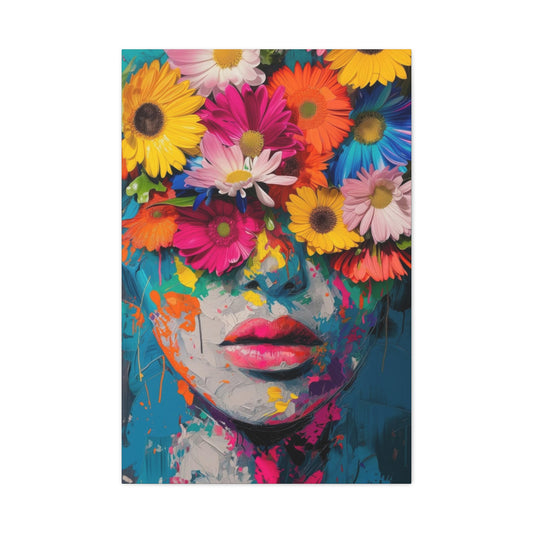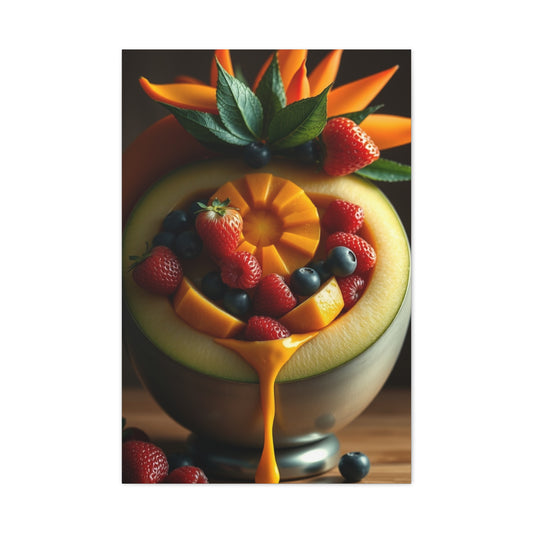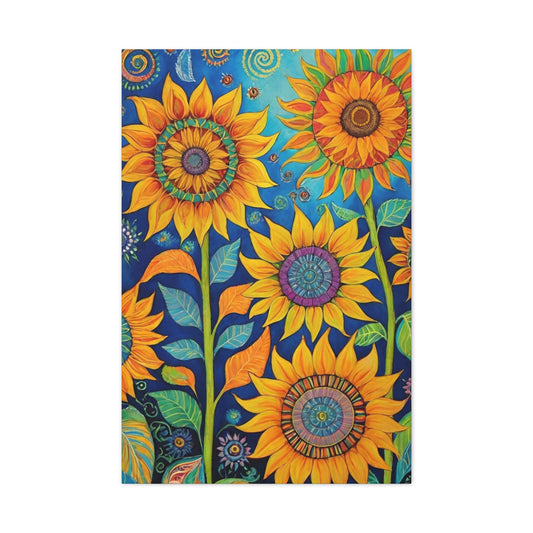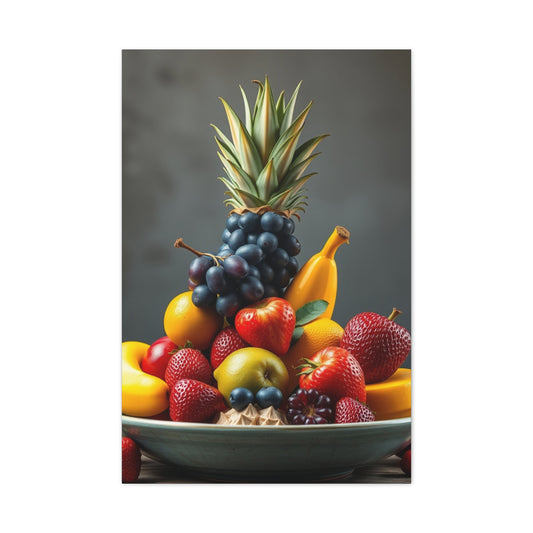Planning, Design, and Functional Wall Solutions
A basement offers an often-overlooked opportunity to expand the living space of your home. With the right design, it can become a cozy haven, a bustling playroom, or even a stylish entertainment area. However, an unfinished basement with bare, unattractive walls can hinder your vision. Transforming your basement starts with creative and practical wall solutions that elevate its potential, blending both functionality and aesthetic appeal. In this first part of our series, we’ll explore the steps for planning and designing your basement, as well as introducing functional wall solutions that lay the foundation for a remarkable transformation.
Planning Your Basement Design
Before diving into specific wall ideas, it’s crucial to evaluate your basement's dimensions and layout. A clear floor plan is key to understanding how best to utilize the space. Start by taking accurate measurements of the room's dimensions, identifying focal points, and assessing the functionality of different areas. If your basement features oddly shaped corners or windows that restrict the flow, these can be worked into your design. It's important to consider how these factors affect light and airflow, so you can make informed decisions about your wall and overall space design. This process helps in visualizing the basement's full potential, ensuring that each area serves its intended purpose.
Once you have a sense of the layout, the next step is to consider the basement’s function. Is it going to be a home theater, a game room, or an extra bedroom? The function will dictate the style and materials for your basement walls. If the goal is to create a relaxed environment for watching movies or playing games, your wall design will focus on comfort and acoustics. On the other hand, a functional workspace or storage area might require more practical and durable wall finishes.
Budget Planning for Basement Walls
Designing a basement space can range from modest updates to a full-scale remodel, and your budget should reflect the scope of your plans. If you’re working with a limited budget, focus on essential upgrades such as insulation, moisture-resistant materials, and efficient lighting. These will provide long-term value and functionality. Once the basics are covered, you can allocate funds for decorative elements like wall panels, paint, or custom artwork.
Consider how your wall choices can also support the functionality of the room. For instance, if you plan to turn your basement into a laundry area or storage room, you'll want to choose materials that are resistant to moisture and durable. On the other hand, if your basement is more for leisure or entertainment, adding stylish touches like feature walls or accent colors can help elevate the overall ambiance.
Functional Wall Solutions for Basements
When designing basement walls, it's important to combine both practicality and aesthetic appeal. Your walls will not only contribute to the look of the space but also affect the comfort and usability of the basement. Let’s explore some functional wall solutions to consider when transforming your basement.
Insulated Walls for Comfort and Energy Efficiency
One of the most crucial elements in basement wall design is insulation. An insulated basement will not only provide year-round comfort but also enhance the energy efficiency of your home. Insulation helps maintain a stable temperature and can even reduce your utility bills. Common insulation options for basement walls include foam, fiberglass batts, and insulated panels. Fiberglass batts are often the most affordable choice and are available in pre-cut panels, rolls, or loose-fill, making installation easier.
Beyond improving comfort, insulated walls also serve as vapor barriers, preventing moisture from seeping through and causing dampness or mold. Insulating your basement can add warmth and make the space more inviting, particularly during colder months. This can be especially important if you intend to use the basement as a living space, home office, or guest room.
Moisture-Resistant Materials for Basement Walls
Basements are often prone to dampness, which can lead to mold, mildew, and structural damage over time. To safeguard your walls, choose materials designed to resist moisture. Moisture-resistant drywall or cement board is a popular option for basement walls. These materials are specifically designed to prevent water absorption, keeping your space dry and safe.
For additional protection, you can apply waterproof paints to the walls. While it may cost a bit more upfront, waterproof paint offers an added layer of defense against humidity, ensuring that your basement walls remain unaffected by water damage. In areas of the basement prone to higher moisture levels, such as near windows or in corners, this can make a significant difference.
Creative Wall Finishes: Aesthetic Appeal Meets Practicality
Once the essential wall structures are in place, you can begin to focus on the design and visual appeal of your basement. A functional space can easily be transformed into a visually inviting one by incorporating creative wall finishes. Whether you’re aiming for a bold, contemporary look or a more rustic, traditional feel, there are various options to suit your taste and budget.
Accent Walls and Wallpaper
Accent walls are an effective way to inject color, texture, and personality into your basement. By choosing a bold paint color or patterned wallpaper, you can instantly create a focal point that draws attention. For a more sophisticated touch, opt for a dark or rich color on one wall, and balance it with neutral tones on the remaining walls.
Another popular option for adding flair is wallpaper. From bold geometric patterns to nature-inspired designs, wallpaper is an affordable and versatile way to elevate your basement's aesthetic. Choose a pattern that complements the overall vibe of the room, whether it’s a subtle texture for a cozy retreat or a striking print to make a bold statement.
Wood Paneling and Shiplap
For a rustic, warm atmosphere, consider installing wood paneling or shiplap on your basement walls. Wood panels come in various shades and finishes, allowing you to find the perfect style to match your space. They add depth and texture while creating a welcoming environment.
Shiplap, a type of wooden board, is an increasingly popular choice for creating a cozy and rustic vibe. It's a cost-effective option that’s easy to install, making it perfect for DIYers. Shiplap can be used across an entire wall for a more dramatic effect, or you can use it as an accent feature in specific areas. Another option is beadboard, which provides a clean, classic look with horizontal or vertical lines that can help make a small basement feel more expansive.
Accent Walls, Artwork, and Personalized Decor for Your Basement
In the first part of this series, we laid the foundation for transforming your basement with functional wall solutions, insulation, and moisture-resistant materials. Now, it’s time to focus on the artistic side of your basement design. Accent walls, artwork, and personalized decor can take an otherwise plain basement and turn it into a stunning, unique space that reflects your personality and style. Whether you want to create a focal point, add character, or infuse the space with warmth, the walls are a perfect canvas for expressing your design vision. In this second part of the series, we’ll explore some creative ways to decorate your basement walls with statement pieces that add both beauty and functionality.
Creating Stunning Accent Walls
One of the easiest ways to make a statement in any room, especially in a basement, is by creating an accent wall. These walls allow you to introduce bold colors, striking textures, and even new materials without overwhelming the space. An accent wall draws attention and can help to define the purpose or mood of a room, whether it’s a cozy reading nook, a lively game room, or an elegant home office.
Using Bold Paint Colors for Accent Walls
When it comes to accent walls, paint is one of the most cost-effective and flexible options. Bold, darker shades such as deep navy, charcoal, or forest green are perfect for creating a dramatic and inviting atmosphere. For a more sophisticated vibe, opt for rich jewel tones like emerald or sapphire. These deep hues can add depth and warmth to a basement, making it feel less like a subterranean space and more like an inviting, atmospheric room.
In addition to darker colors, consider incorporating metallic paints or finishes for added glamour. Metallic paints catch and reflect light, making your accent wall shine and adding a contemporary flair. A metallic accent wall can look especially striking in a basement turned entertainment room, home bar, or living area.
Wallpaper as a Textural Focal Point
For a more adventurous approach to accent walls, wallpaper is an excellent choice. Unlike a simple coat of paint, wallpaper can add intricate patterns, textures, and even visual illusions to your basement. From large-scale geometric patterns to subtle textures like linen or faux brick, wallpaper allows you to create a distinct mood in your space.
One of the key benefits of wallpaper is its ability to create dimension in small or narrow basements. For example, vertical stripes or herringbone patterns can visually elongate a room, while larger patterns or murals can help emphasize a focal point. When selecting wallpaper, consider the overall theme of your basement—whether it’s minimalist, industrial, or rustic—and choose a pattern that complements the style you want to achieve.
Unique Feature Walls: Material and Texture Play
An accent wall doesn’t always have to be painted or wallpapered. Another fantastic way to create a striking feature in your basement is by using different materials and textures. Material feature walls provide dimension and visual interest, making the room feel less one-dimensional. Here are some ideas to explore:
Brick Veneer for an Urban Edge
Brick veneer is an excellent choice for creating an urban, industrial vibe in your basement. Unlike traditional brick walls, brick veneer is a thin, cost-effective layer of brick that’s easy to install and can be adhered directly to your basement walls. This material is great for adding character and warmth without the permanence and heaviness of full brick construction.
Brick veneer is versatile and pairs well with a variety of design styles. It works beautifully in spaces aiming for a rustic, loft-style, or even modern industrial look. Whether you choose red bricks for a traditional appeal or opt for a whitewashed version for a more contemporary feel, a brick feature wall can instantly elevate the ambiance of your basement.
Stone Cladding for a Rustic or Vintage Look
If you’re looking for something with a bit more texture and a timeless aesthetic, consider stone cladding. Stone cladding offers the beauty of natural stone without the high cost and labor associated with full stone walls. It’s available in a variety of materials, including slate, limestone, and granite, each providing a unique look and feel to your space.
Stone cladding adds visual interest and can make a basement feel warm and earthy. For a more rustic or vintage appearance, opt for reclaimed stones or a combination of natural and artificial stones. This design is ideal for creating a cozy and grounded environment, perfect for a family room or home library in your basement.
Reclaimed Wood for an Eco-Friendly, Vintage Vibe
Reclaimed wood has been gaining popularity as a sustainable material in home design, and it’s a fantastic option for creating a feature wall in your basement. Whether you’re looking to create a farmhouse, industrial, or eclectic style, reclaimed wood adds a natural element that brings warmth and texture to the space.
Reclaimed wood walls evoke a sense of nostalgia and craftsmanship, making them perfect for basements that serve as gathering spaces or guest rooms. Not only is reclaimed wood eco-friendly, but it also comes with a unique history and character that new wood simply cannot replicate. Whether you go for a full wooden wall or use wood as an accent piece, this material brings a rustic, earthy charm to any basement.
Art and Murals to Enhance Your Basement Walls
Art plays a crucial role in creating a dynamic and inviting space. It can turn a plain, uninspiring wall into a piece of functional decor, injecting life and personality into the room. Whether you prefer traditional paintings, modern abstract art, or custom murals, adding artwork to your basement walls is one of the best ways to enhance the ambiance.
Murals for a Custom, Personalized Touch
Murals are an exceptional way to create a one-of-a-kind design for your basement. Unlike framed artwork or prints, murals are directly painted on the wall, transforming it into a piece of art in itself. Murals allow you to create any scene or image that reflects your tastes, whether it’s a nature-inspired landscape, a cityscape, or abstract designs.
If you want to add a personal touch, consider commissioning a custom mural that reflects the activities or passions you plan to enjoy in the space. A mural in a home theater might depict a favorite movie scene, while a mural in a playroom can feature whimsical elements like forests, animals, or castles. Custom murals are an excellent way to incorporate storytelling into your design, making the space feel truly yours.
Framed Artwork and Wall Decals
If murals are too permanent for your taste, framed artwork or wall decals are a more flexible solution. Framed artwork can be easily rotated or replaced, allowing you to update the room’s look as your style evolves. Consider selecting large statement pieces that act as the room’s focal point or a gallery wall filled with smaller prints that reflect your personal interests.
Wall decals, on the other hand, are an affordable and fun way to add personality without committing to large artwork. From inspirational quotes to playful geometric patterns or nature-inspired designs, wall decals are easy to apply and remove. They offer a creative way to customize your basement without the hassle of painting or hanging heavy artwork.
Personalized Decor: Making Your Basement Unique
Personalizing your basement with custom artwork or portraits adds a layer of sentiment and uniqueness to the space. Consider incorporating personalized pieces that reflect your family, pets, or favorite places. Not only do these pieces make the space more meaningful, but they also create a warm and inviting atmosphere that welcomes guests and makes the basement feel like an extension of your home.
Custom Portraits from Wall pics
One of the most effective ways to personalize your basement walls is by adding custom portraits. Wall pics offers a range of portrait options, including family portraits, pet portraits, and scenic landscapes. These customized pieces can bring an emotional and personal touch to your space, transforming your basement into a warm, inviting retreat. Whether you want a stunning oil painting, a detailed charcoal sketch, or a watercolor portrait, Wall pics ensures that each piece is crafted to fit your exact needs and style.
Custom portraits not only personalize the space but also provide timeless decor that can be passed down through generations. They also make excellent conversation starters, sparking memories and emotions whenever guests visit. Consider placing these personalized pieces on your basement’s accent wall or within a gallery-style setup for maximum visual impact.
Lighting, Storage, and Functional Design Enhancements for Your Basement
In the previous parts of this series, we delved into creative ways to transform your basement walls through insulation, moisture-resistant materials, accent walls, and personalized artwork. Now that your space is brimming with style, it’s time to shift focus to two essential aspects of any basement design: lighting and storage. These elements not only contribute to the overall aesthetic but also significantly impact the functionality of your basement. Effective lighting solutions can dramatically enhance the mood, making the space more inviting, while innovative storage ideas can help maximize the available space, keeping your basement organized and tidy.
In this third part of our series, we will explore how to light your basement effectively and provide creative, space-saving storage solutions that cater to both style and practicality. Together, these strategies will help elevate your basement into a comfortable and functional area for your family and guests.
Lighting: Creating the Right Ambiance for Your Basement
Basements often suffer from a lack of natural light, which can make them feel dark and uninviting. However, with the right lighting choices, you can easily transform your basement into a well-lit and welcoming space. A combination of functional and decorative lighting can help create an ambiance that suits the intended use of the room, whether it’s a cozy home theater, a lively game room, or a serene home office.
Layering Your Lighting
One of the most effective ways to light a basement is by using a layered approach. Layering lighting involves incorporating different types of light sources to create a balanced and inviting atmosphere. This includes ambient lighting (the primary light source), task lighting (for specific activities), and accent lighting (to highlight features or add ambiance).
-
Ambient Lighting: This is the overall light that illuminates the room. Recessed lighting is a popular choice for basements, especially when ceiling height is limited. These lights are installed into the ceiling, providing a clean, modern look while maximizing ceiling space. Alternatively, flush-mount ceiling lights or overhead pendant lights can also serve as excellent ambient lighting options.
-
Task Lighting: Task lighting is essential for areas where activities such as reading, working, or cooking will take place. In a basement designed as a home office, desk lamps or adjustable overhead lights are ideal for focusing light on work areas. For a kitchen or bar area, pendant lights or under-cabinet lighting are practical and stylish solutions.
-
Accent Lighting: Accent lighting is used to highlight specific areas of interest, such as artwork, feature walls, or decorative elements. Wall sconces, track lighting, or LED strips are ideal for drawing attention to a mural, custom portrait, or textured accent wall. For example, placing LED strip lights around a feature wall can accentuate the texture of reclaimed wood, brick veneer, or stone cladding, enhancing its visual appeal.
Decorative Lighting: Adding Warmth and Style
Beyond basic lighting, decorative lighting plays a crucial role in setting the tone and ambiance of your basement. Decorative lighting adds charm and personality while complementing the overall design. Here are a few ideas to add warmth and style to your basement:
-
String Lights: String lights are a popular, cost-effective way to add a soft, cozy glow to any basement. You can hang them around windows, along walls, or drape them across the ceiling for a whimsical effect. They’re especially effective in creating a laid-back, inviting vibe in basements that double as entertainment spaces or cozy lounges.
-
LED Strips: LED strip lights are highly versatile and can be used in various ways to illuminate your basement. You can install them around the perimeter of the ceiling for ambient lighting or place them under furniture or along shelves to create subtle, indirect lighting. Additionally, LED strips are energy-efficient, making them a practical choice for long-term use.
-
Pendant Lights: Pendant lights are ideal for adding character to your basement, especially if you have a bar, kitchen island, or dining area. Hanging pendant lights in a cluster can make a bold statement, while single pendant lights provide a more understated look. Choose pendant lights with interesting designs or materials, such as vintage-style bulbs or geometric metal fixtures, to complement the basement’s overall style.
-
Wall Sconces: For a more traditional and elegant lighting solution, wall sconces can help illuminate walls while adding a decorative touch. Choose sconces with dimmable features to adjust the lighting level based on the desired mood. Wall sconces work well in basements with higher ceilings or feature walls, highlighting the textures or artwork in the room.
Storage Solutions: Maximizing Space and Style
Basements are often seen as the ideal place to store seasonal items, tools, and household supplies, but they also need to be functional and organized. With the right storage solutions, you can turn your basement into an efficient, tidy space without sacrificing style. Whether you need to store your family’s belongings or organize a home gym, incorporating built-in storage, modular systems, and multi-functional furniture is key to making the most of your basement’s space.
Built-In Shelving: Efficient and Elegant
Built-in shelving is an excellent way to maximize wall space while maintaining a sleek, organized appearance. Floating shelves, recessed shelves, and custom bookcases all offer practical storage options without taking up too much space. You can install built-in shelving along one wall of your basement to store books, decorative items, or even your media equipment.
-
Floating Shelves: Floating shelves are a minimalist, modern option that offers plenty of storage without overwhelming the room. These shelves can be mounted directly onto the wall without visible brackets, giving the illusion of more space and allowing for creative arrangement of items. Consider placing floating shelves on either side of a feature wall or under a set of pendant lights to enhance both function and style.
-
Recessed Shelving: Recessed shelving is built directly into the wall, which helps conserve floor space while providing ample storage. This is particularly useful in basements with limited space, as it reduces clutter while maintaining a clean aesthetic. Recessed shelves can be used to store everything from books to decorative objects and can be customized to fit the unique shape of your basement.
-
Custom Bookcases: If you’re looking for something more tailored to your needs, custom bookcases can be designed to fit the available space and provide a stylish solution for organizing your items. You can have bookcases built into alcoves or along an entire wall, allowing you to store books, media, and even household essentials.
Multi-Functional Furniture: Storage with Purpose
In basements that need to serve multiple purposes—such as a family room that doubles as a guest area—multi-functional furniture is a game-changer. Furniture pieces that combine seating with hidden storage can help keep the room organized without cluttering the space.
-
Storage Benches: Storage benches are great for providing both seating and storage in one. They can be placed along walls, in entryways, or at the foot of a bed in a guest room. Storage benches can hold everything from extra blankets to toys, cleaning supplies, or board games, keeping your basement looking tidy.
-
Storage Ottomans: Like storage benches, ottomans with hidden compartments allow you to store items discreetly while serving as a comfortable footrest or additional seating. Storage ottomans come in a variety of styles, from sleek, modern designs to plush, cozy options, making them perfect for any basement decor.
-
Modular Storage Systems: Modular storage systems are incredibly versatile and allow you to customize your storage needs. These systems can be reconfigured to accommodate various items, from books to electronics. Choose modular units that fit the space available, and stack them vertically or arrange them horizontally to suit the layout of your basement.
Cabinet Systems: Aesthetic and Practical Storage
Cabinets are a great option for basement storage, particularly in rooms like home offices, laundry areas, or bars. Well-designed cabinetry can keep your space organized while blending seamlessly into the overall design of the room. Consider cabinets with a combination of open and closed storage to balance accessibility and aesthetics.
-
Wall Cabinets: Installing wall cabinets above countertops or along empty walls can help keep tools, cleaning supplies, or other items off the floor. Wall cabinets with glass doors also allow you to display decorative items while keeping everything else neatly hidden.
-
Free Standing Cabinets: For more flexibility, opt for freestanding storage cabinets. These can be moved around depending on your needs and provide ample space for storing anything from clothes to sports equipment or seasonal decor. Choose free standing cabinets that compliment your basement’s style, such as rustic wooden units for a vintage feel or sleek metal ones for an industrial look.
Eco-Friendly Design, Sustainable Materials, and Final Touches for Your Basement
In the previous parts of this series, we've discussed how to creatively design your basement by incorporating stylish wall finishes, effective lighting, and smart storage solutions. Now that you’ve transformed the look and functionality of your space, it’s time to consider the final crucial component: sustainability. With increasing environmental awareness, many homeowners are turning to eco-friendly materials and energy-efficient solutions to create a basement that not only looks great but also minimizes environmental impact.
In this final part of our basement transformation series, we will explore how to make your basement design more sustainable without compromising on style or comfort. From using recycled materials to implementing energy-efficient features, these tips will help you build a space that’s both beautiful and eco-conscious.
Sustainable Materials: Making the Right Choice
One of the key aspects of creating an eco-friendly basement is choosing materials that are not only aesthetically pleasing but also environmentally responsible. By using sustainable and recycled materials, you can reduce the overall carbon footprint of your basement renovation while supporting eco-friendly practices.
Recycled and Upcycled Wood
Wood is a classic and versatile material, but traditional wood products often come from unsustainable sources that contribute to deforestation. To minimize environmental impact, consider using recycled or upcycled wood for your basement design. These materials are typically sourced from old buildings, furniture, or even reclaimed timber from forests affected by logging.
-
Reclaimed Wood Paneling: Reclaimed wood paneling adds a rustic and authentic touch to your basement while being an eco-friendly option. Whether you’re designing a feature wall, creating shelves, or adding paneling throughout the room, reclaimed wood brings natural beauty and a sense of history to the space.
-
Upcycled Wood Flooring: Upcycled wood can also be used for flooring. This type of flooring is often made from reclaimed wood, making it a sustainable and attractive choice. You can find upcycled wood in various finishes, from rustic barn wood to sleek and polished contemporary styles.
By opting for reclaimed or recycled wood, you’re not only reducing waste but also giving new life to materials that would otherwise go unused, helping to protect forests and ecosystems.
Sustainable Wall Panels: 3D and Cork Panels
Another excellent sustainable option for your basement walls is the use of 3D wall panels and cork panels. These materials are eco-friendly, attractive, and functional.
-
3D Wall Panels: 3D wall panels, often made from recycled materials such as bamboo, are a great way to add texture and visual interest to your basement. These panels come in various designs, including geometric patterns, natural-inspired motifs, and more. The added dimension enhances the aesthetic appeal of your basement, while the materials used in these panels contribute to a more sustainable interior.
-
Cork Wall Panels: Cork is a renewable material harvested from the bark of cork oak trees, and it’s a fantastic choice for eco-conscious homeowners. Cork wall panels are naturally insulating, helping to improve soundproofing and energy efficiency in your basement. They’re also available in a variety of finishes and styles, from natural cork tones to painted options that can complement any basement decor.
Low-VOC Paints and Finishes
Another critical consideration when designing an eco-friendly basement is the use of low-VOC paints and finishes. Volatile Organic Compounds (VOCs) are chemicals that can be harmful to both your health and the environment. Traditional paints and finishes often contain high levels of VOCs, which release harmful fumes into the air, contributing to indoor air pollution.
Low-VOC and no-VOC paints are formulated with minimal harmful chemicals, making them a safer choice for both you and the planet. These paints come in a wide range of colors, allowing you to choose the perfect shades for your basement walls without sacrificing quality or durability.
Look for paints that are labeled as low-VOC or no-VOC, and ensure that they are made from natural or non-toxic ingredients. These paints also tend to be more breathable, which is especially beneficial for basement spaces that may have moisture issues.
Recycled Insulation Materials
When it comes to improving the comfort and energy efficiency of your basement, using recycled insulation materials is a sustainable option. Fiberglass insulation is often made from recycled glass, making it an environmentally friendly choice. It’s also highly effective at keeping your basement warm in winter and cool in summer, reducing your need for artificial heating and cooling.
-
Recycled Denim Insulation: Another innovative insulation material is recycled denim, which is made from old jeans and other denim garments. Denim insulation is an eco-friendly and non-toxic alternative to traditional fiberglass, and it’s just as effective at reducing energy costs while ensuring a comfortable living environment.
By using recycled insulation materials, you can improve your basement’s energy efficiency while contributing to the reduction of waste.
Energy-Efficient Design: Saving Resources and Money
Energy efficiency is a key component of creating an eco-friendly basement. By implementing energy-efficient solutions, you can reduce your carbon footprint, save money on energy bills, and create a comfortable, sustainable environment. Here are some simple yet impactful energy-saving tips for your basement:
Insulated Walls and Floors
As mentioned earlier, insulated walls and floors are essential for maintaining a comfortable temperature in your basement. Insulated walls can help prevent heat loss in winter and keep the space cool in summer, reducing the need for excessive heating and air conditioning. This not only saves energy but also makes the basement more livable year-round.
Opt for high-quality insulation materials such as foam boards or spray foam insulation, which offer excellent thermal resistance. These materials can be installed behind the walls and beneath the flooring to prevent air leaks and create a more energy-efficient basement.
Energy-Efficient Lighting
Lighting is another key area where you can save energy in your basement. Traditional incandescent light bulbs consume more energy and generate excessive heat, making them less efficient for basements that may already struggle with temperature control. Instead, opt for energy-efficient lighting solutions such as LED or CFL bulbs. These bulbs use significantly less energy, last longer, and produce less heat, making them an excellent choice for any basement.
LED strips, wall sconces, and recessed lighting all provide ample illumination without wasting energy. By upgrading your lighting to energy-efficient options, you can create a more sustainable basement while enhancing the space’s overall ambiance.
Smart Thermostats
Installing a smart thermostat in your basement allows you to monitor and control the temperature more efficiently. These devices learn your schedule and adjust the temperature accordingly, ensuring that you’re not heating or cooling the basement when it’s not in use. This not only improves comfort but also helps reduce energy waste, making it a smart investment for any eco-conscious homeowner.
Final Touches: Personalizing Your Eco-Friendly Basement
Once your basement is equipped with sustainable materials and energy-efficient features, it’s time to add those personal touches that make the space truly yours. Personalized artwork, family photos, and unique decor items will help create a warm and inviting atmosphere while reflecting your individual style.
-
Custom Portraits and Art: Consider incorporating custom portraits, such as family portraits, pet portraits, or scenic paintings, into your basement design. These can be displayed on feature walls or above furniture, adding personality and warmth to the space. Services like Wall pics offer high-quality custom artwork, allowing you to create unique and personal pieces for your basement that complement the eco-friendly design elements.
-
Indoor Plants: Indoor plants are a great way to enhance the aesthetic and air quality of your basement. Plants like ferns, succulents, or snake plants thrive in basement environments, and their lush greenery can add a touch of nature to your interior.
-
Upcycled Furniture: For a truly sustainable basement, consider sourcing upcycled or secondhand furniture. Vintage furniture pieces are not only environmentally friendly but also add character and charm to your space. Look for local thrift stores or online marketplaces to find one-of-a-kind pieces that align with your design vision.
Conclusion:
Designing the perfect basement begins with careful planning and considering the functional aspects of the space. By starting with a clear floor plan, setting a budget, and incorporating practical solutions like insulation and moisture-resistant materials, you can ensure your basement is both comfortable and efficient. With a solid foundation in place, the next step is to focus on the aesthetic elements that will truly transform your basement into a stylish retreat. Creative wall finishes, such as accent walls, wood paneling, and wallpaper, will provide the visual appeal needed to create a space that is as inviting as it is functional.
We’ll dive deeper into accent walls, art, and personalized decor options,including how custom portraits and murals can add a personal touch to your basement. Stay tuned as we continue to explore ways to elevate your basement space into a unique and stylish part of your home.
Transforming your basement focuses on the creative aspects of wall design, from accent walls to custom artwork. By choosing the right materials, textures, and art, you can completely transform a bland, unfinished basement into a stylish, functional living area.
Whether you’re opting for bold accent walls, textured feature walls, or personalizing your space with custom portraits and murals, these creative design choices will add warmth, character, and charm to your basement.We will explore practical storage solutions and lighting strategies that can further enhance your basement’s functionality while complementing the aesthetic changes you’ve made. Stay tuned as we continue to build on your basement’s transformation!
Our basement transformation series, you now have a better understanding of how to enhance your basement with functional lighting and smart storage solutions. By layering your lighting, incorporating decorative elements, and opting for multi-functional and built-in storage solutions, you can elevate the functionality and aesthetic appeal of your basement.
We will look at eco-friendly materials and sustainable design choices that will not only enhance your basement’s beauty but also contribute to a healthier environment. Stay tuned as we continue to explore the many ways you can transform your basement into a space that works for you and your family.In this final part of our basement transformation series, we’ve explored how to incorporate sustainable materials, energy-efficient features, and eco-conscious design choices into your basement.
By selecting recycled materials, low-VOC paints, and energy-efficient solutions, you can create a basement that is both beautiful and environmentally friendly.Incorporating these sustainable elements ensures that your basement is not only a stylish and functional space but also one that supports your values and minimizes its impact on the planet.
With thoughtful planning, attention to detail, and a focus on sustainability, you can transform your basement into a space that is both welcoming and eco-conscious, adding long-term value to your home.























